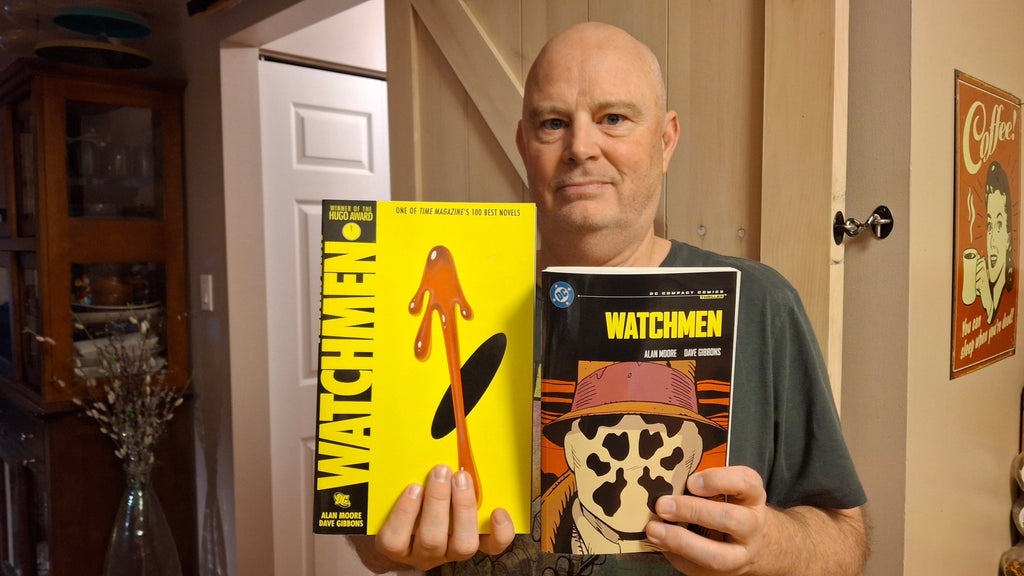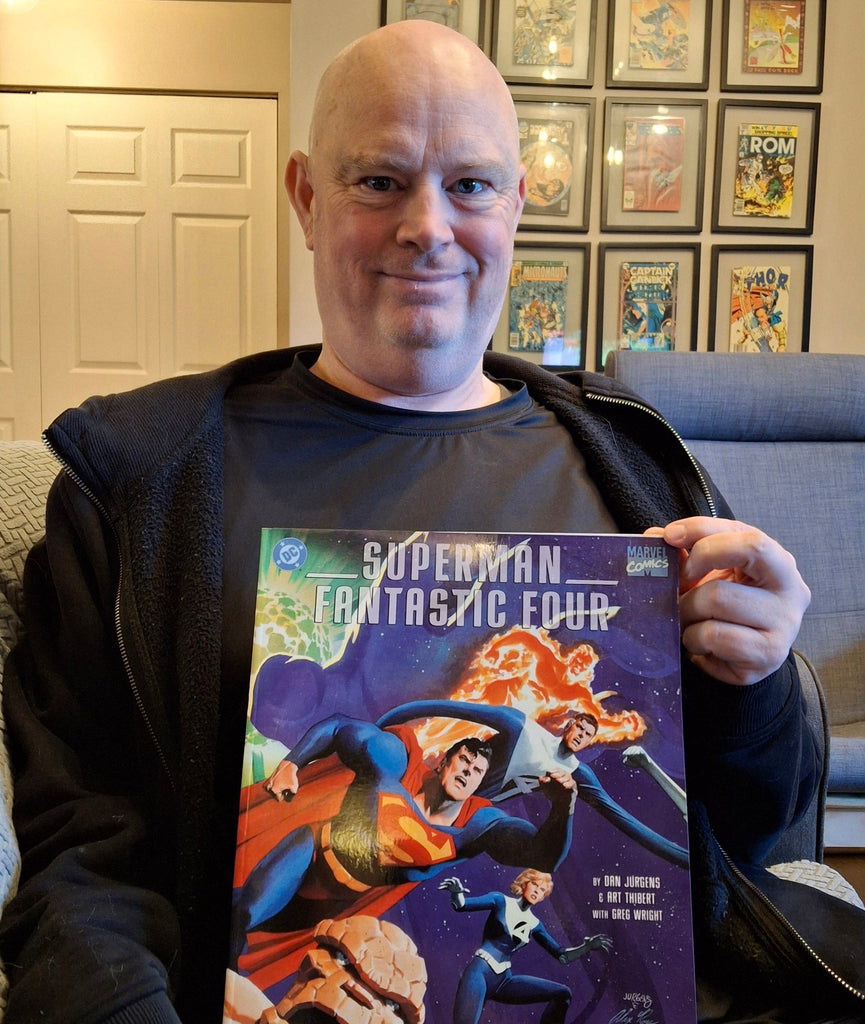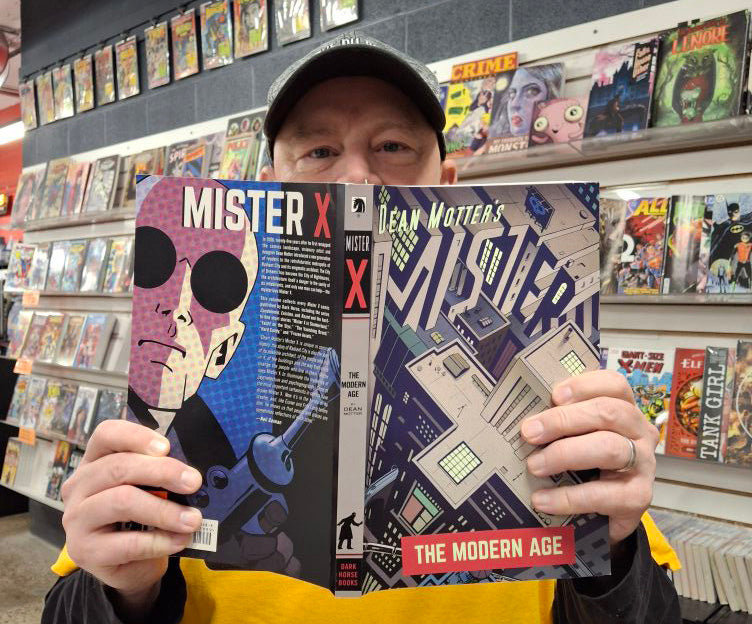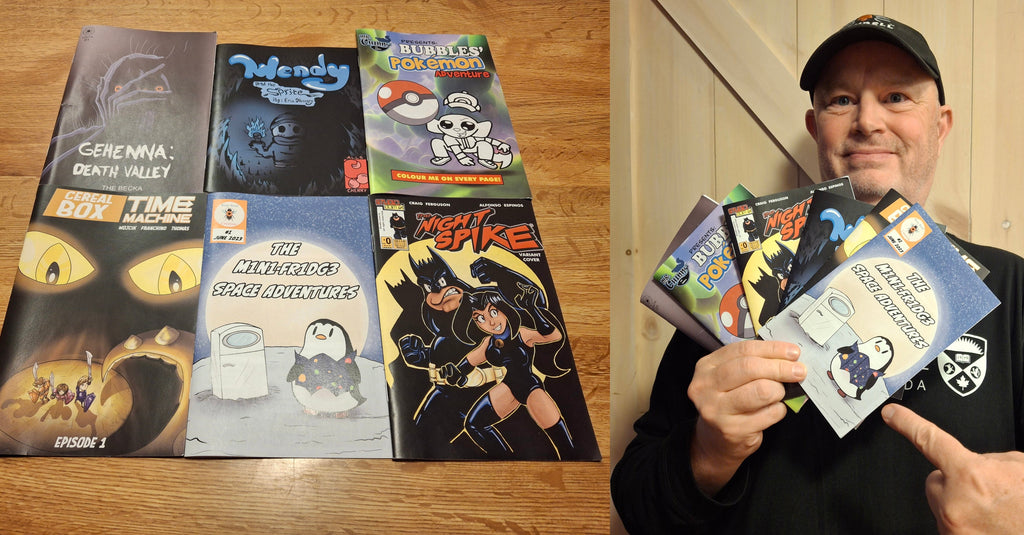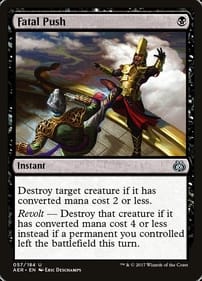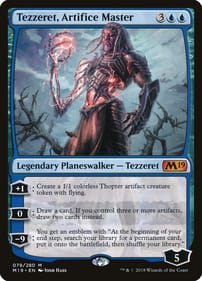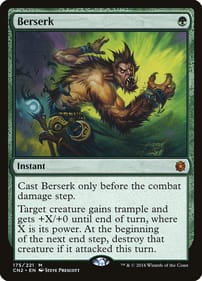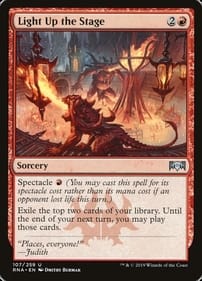Merc With A Mouth Crashes Into Dark Knight’s World
By Dan Brown There’s nothing unusual about someone hiring Deadpool to carry out a contract killing. But when his latest job takes him to Gotham City, that’s when comic fans know this is no ordinary assignment. Deadpool/Batman is the latest comic-industry crossover. It shows what happens when the Merc With a Mouth (a Marvel character) crashes into the world of Batman (a DC creation). Both companies are probably hoping that by joining forces they can introduce a new generation of comic readers to the concept of industry crossovers, thus cross-pollinating different fandoms. There’s a long tradition of superhero crossovers going back to at least 1976, when Superman fought Spider-Man for the first time. Since then, they’ve become a comic fixture. (And a cultural fixture – just check out the movies like Alien vs. Predator or Freddie vs. Jason.) The story, illustrated by Greg Capullo and written by Zeb Wells, begins when Deadpool leaps through the very manor window where a bat once appeared, inspiring a young Bruce Wayne to avenge his parents by donning a batsuit. Unaware of Wayne’s secret identity, the fast-talking Deadpool explains to Wayne he has been hired to off the Dark Knight: “Some guy who dresses like a bat? Which I’m assured is grim and creepy even though that’s clearly hilarious?” (When the mutant assassin eventually comes face-to-face with the Caped Crusader, he admits he was mistaken. “Batman! You’re . .. terrifying. I hate myself for saying this, but the bat thing? It works.”) Fans of Deadpool will be happy seeing him wield a katana in each hand, and Batman devotees will be satisfied to see him brooding. It’s quite a clash of tones. In fact, those fans might find themselves questioning the book’s premise: These two don’t seem to have a lot in common, at least on the surface. Why have them become partners? Doesn’t the crazed Deadpool have more in common with someone else in the Batman pantheon . . . his nemesis, the insane Joker? Yup. Without giving too much away, the Clown Prince of Crime does make an appearance, with Deadpool labeling him a villain whose “brain is a neurospicy dopamine goblin with task paralysis and a lack of object permanence.” In other words, Deadpool and the Joker are perfect for each other. There are also backup features in this book that pair more DC heroes with Marvel protagonists. Wonder Woman teams up with Captain America, Green Arrow with Daredevil, Frank Miller’s Batman with Old Man Logan, and so on. The funniest moment among these pairings comes when Rocket Raccoon tries on Green Lantern’s ring: “Brightest day, blackest night, yada yada. Green flame on!” the genetically engineered woodland mammal cries. Considering the main story is only 25 pages long, what I would have liked to have seen is for the publishers to devote those extra 16 pages to fully fleshing out the title team-up. (There is also another crossover published at the same time as Deadpool/Batman called Batman/Deadpool, which I haven’t read yet.) With more pages, they could have expanded what is essentially an appetizer into a full-fledged meal. Also, unlike the crossovers of my childhood, the current ones are published in a regular-size comic format, so they don’t feel as special as the jumbo ones of old. Dan Brown has covered pop culture for more than 33 years as a journalist and also moderates L.A. Mood’s monthly graphic-novel group.
Are Comics At A Turning Point?
By Dan Brown Two comics-related announcements jumped out at me last week. They are both about the current state of the industry. What to make of them? I honestly don’t know. At this point, I’ve got more questions than answers. So I’m going to lay the two statements out for you, along with some thoughts, in hopes some kind of meaning will emerge. The first was a speech delivered by DC Comics President Jim Lee to comic-store owners at New York Comic Con, in which he said the company will never use artificial intelligence, so long as he’s the boss. “DC Comics will not support AI-generated storytelling or artwork. Not now, not ever, as long as I am in charge,” he promised the crowd. “Because what we do and why we do it is rooted in our humanity. It's that fragile, beautiful connection between imagination and emotion that fuels our media, the stuff that makes our universe come alive. It's the imperfect mind, the creative risk, the hand-drawn gesture that no algorithm can replicate.” “And when I draw, I make mistakes, a lot of them. But that's the point. The smudge, the rough line, the hesitation. That's me in the work. That's my journey. That's what makes it come alive. It's the product of true effort, of inspiration, and perspiration. Fans know this. They sense this.” “They can feel when something was made with care, when it cost the artist time, energy, heart, and effort. People have an instinctive reaction to what feels authentic. We recoil from what feels fake. That's why human creativity matters. AI doesn't dream. It doesn't feel. It doesn't make art. It aggregates it. Our job as creators, as storytellers, and as publishers is to make people feel something real. That's why we create, and that's why we're still here." That’s about as passionate a defence of the human element in comics-making I’ve ever heard. And, cards on the table, I have no interest in reading comics or graphic novels that aren’t created by human hands. But what if that’s what the market wants? What if young fans, who don’t have the same sentimental connection to comics history that I and my peers share, demand AI comics? Doesn’t DC have an obligation to serve the needs of those readers? I ask because, for instance, there’s an entire segment of fandom that don’t want to read about characters like Batman – they want to be Batman, which they can do via online gaming. I’m not sure those fans care who (or what) is rendering their favourite characters. The second thing I noticed last week was a social-media post (I saw it on Facebook) from legendary comic writer Gail Simone, who has penned stories featuring heroes from Superman to Batgirl to Deadpool to her own creator-owned characters. “It's been a really weird time for comics, there's no question about that,” she wrote.“But I've spoken with the very biggest of wigs at three of the top five publishers in the last six weeks and they all said the same thing: Comic sales are up, a lot.” “One also said there is a definite trend towards specifically physical things, particularly a subset, newish physical things, that people want to purchase. The message seems to be that different formats and variants and specialty items are growing in sales in a big way, while digital sales remain flat. It is honestly the most excited I have seen these companies in years.” “This is going on through the pandemic and the election and inflation and tariffs and the distribution nightmare that retailers have to deal with. All those challenges, and comics are up and rising. I'm talking physical sales from U.S. publishers. In spite of all that stuff. And several companies have produced some genuine banging hits requiring multiple printings.” “Not everything is rosey, but I think that's pretty exciting. I know there are caveats but without strong sales, nothing else matters, nothing is fixable without people getting the books. There's a lot of people who wouldn't give up . . . creators, publishers, retailers, and I'm thankful because you guys, I love this artform more than just about anything. But it all starts with readers. SO THANK YOU, READERS!” Simone’s comments echo news coming out of the same gathering where Lee spoke, New York Comic Con. A report by Heidi MacDonald of Publishers Weekly quoted numbers showing sales are up by 27 per cent at many comic shops in the U.S. “despite looming threats from tariffs, recessions, book bans, and the turmoil generated by the Diamond Comic Distributors bankruptcy.” That all sounds like good news to me. And maybe an indication AI may not be as much of a threat as some think. Dan Brown has covered pop culture for more than 33 years as a journalist and also moderates L.A. Mood’s monthly graphic-novel group.
Compact Edition Not Quite Watchmen Babies
By Dan Brown When it comes to comics, size matters. But not as much as paper quality. That’s my conclusion after checking out a mini-edition of the classic Alan Moore/Dave Gibbons graphic novel Watchmen. Published under the DC Compact Comics banner, the smaller reprint contains all 12 issues of the 1986 tale about a superhero murder in an alternate America teetering on the edge of nuclear war with Russia. I found the compact edition didn’t suffer for the reduction in size. Powerful scenes, like when Doctor Manhattan zaps Rorschach into oblivion, still pack a powerful punch. I have feeble middle-aged eyes, but I could still read the dialogue without straining. All that said, I still prefer the original edition. The only real advantage the compact version has is its portability. If I was taking Watchmen to read on a beach on a hot summer day, I’d reach for the smaller one. (Of course, if I took Watchmen to the beach, I’d be a deeply weird individual.) How much smaller are we talking? The Compact Comics edition measures 5.5 by 8.5 inches and has a cover price of $13.50. Compare that to the regular size, which measures 6.75 by 10.25 inches, and set me back $22.99 when I picked it up a number of years ago. (Both of them are paperbacks.) If you’re thinking “Don’t odd-size comics have a long history?” you’d be right. Growing up in the 1970s and going to the grocery store with my Mom, I’d see mini-digests of Archie comics at every checkout. I never bought even a single one. I suspect even today, it doesn’t matter much what size Archie comic you buy, the characters and stories likely land the same. But also in the Seventies, if a comic was momentous enough, it would be published in a huge oversize treasury edition (10.5 by 13.5 inches). Those ones were reserved for “event” stories, as when Superman fought Spider-Man in the first DC/Marvel crossover. When Superman squared off against Muhammad Ali in the boxing ring, that story also got the oversize treatment. Naturally, those bigger comics came with a premium price. The one shame about the tiny Watchmen book was the cheaper paper DC used, which diminishes the effect of its colour scheme. Colour artist John Higgins is the unsung hero of Watchmen, and his powerful colouring doesn’t get the props it deserves as an essential part of the Watchmen reading experience. He specifically chose a non-traditional superhero palette, and the story’s impact is lessened with the switch. Doc Manhattan, to name one example, just isn’t as otherworldly when the luminescent blue covering his body is toned down on the duller paper. Watchmen remains one of the best-selling comics of all time. It continues to top sales charts decades after it was published, first as a monthly comic, then a collected graphic novel. So my bottom line is, if a smaller version helps comic stores to move product, then it’s a good thing. If it turns newbies onto Watchmen, or even turns people into fans of the medium in general, then I’m all for it. I’m sure Alan Moore would have something angry to say. Dan Brown has covered pop culture for more than 33 years as a journalist and also moderates L.A. Mood’s monthly graphic-novel group.
Will New Crossovers Keep It Fresh?
By Dan Brown Incoming! A new batch of DC/Marvel collaborations begins landing in comic stores this month. As old comic fans like me well know, crossovers are an age-old marketing tradition. The question is: Can the combined talent of comicdom’s two industry leaders make them feel fresh and exciting in 2025? The collabs, one published by each company, were announced in February. L.A. Mood’s Matt Finch alerted me they were in the pipeline because he knew I would remember the ones from the 1970s and onward. Those stories take place out of regular continuity. That allows the legal wall between DC and Marvel to be torn down, the result being Superman can team up with Spider-Man, the New Teen Titans with the X-Men, Batman with the Hulk, and so on. Crossovers were once rare, momentous events. When I cast my mind back to the 1970s, I still remember being stunned at the sight of the Man of Steel and Spidey squaring off on the cover of the same comic. Although I was just a dumb kid, I understood this was something special that didn’t happen every month. That’s probably why I grabbed every crossover – typically printed in a larger format – that came my way. Since these special issues sold so well, they quickly evolved into a cottage industry within the larger comics business, and as more independent publishers popped up, those new players tried to grab a piece of the action. Batman has co-starred with Judge Dredd. Archie met the Predator once. The Teenage Mutant Ninja Turtles have taken on Flaming Carrot. Flash-forward to this year, and Godzilla seems to be omnipresent in comics, breathing fire and stomping skyscrapers in every publisher’s imaginative universe. Crossovers represent an extension of the idea of continuity: If every Marvel superhero exists in the same metaverse together, why can’t they exist alongside DC’s stable of stars as well, at least temporarily? The first of the new books will see Deadpool face off against the Dark Knight, with backup stories combining Daredevil and Wonder Woman, and Krypto and Jeff the Land Shark, in the same volume. Along those lines, this summer I found an old Wizard magazine from 1994 in a second-hand bookstore. Among the then-current industry news was a brief touting an upcoming Batman/Punisher outing. That’s how ubiquitous they became. It was from those earlier crossovers that I was first introduced to such characters as the Jack Kirby-created baddie Darkseid. (Lord knows I love Walter Simonson’s art, but how did George Perez not get the assignment when the Titans met the X-Men in 1982?) So that particular volume was instrumental in introducing each company’s fans to the other’s lineup of characters. Crossovers became a way of cross-pollinating different fandoms. Those who loved both of this summer’s big-screen superhero outings – Superman and The Fantastic Four: First Steps – may be surprised to learn that Supes was, like the Silver Surfer, once a herald of Marvel planet-eater Galactus. Yep, it happened in 1999’s Superman/Fantastic Four: The Infinite Destruction, one of the best dual efforts from back in the day. Speaking of the movies, if it’s really true that audiences are finally tiring of superhero stories, how long will it be before one of the big brains in Hollywood suggests using the same strategy on the silver screen that has worked in comics? Isn’t that the logical next step – putting unlikely heroes beside each other to sell movie tickets? I’m betting it’s only a matter of time. If the Alien and the Predator can slug it out, why not put DC heroes and Marvel’s finest beside one another in a motion picture? Indeed, how long until a single mega-company – think Disney – assembles all the characters it owns from different media in the same movie adventure? Admit it: You love the idea of Luke Skywalker partnering with Tony Stark to fight the combined villainy of Darth Vader and Doctor Doom! Dan Brown has covered pop culture for more than 33 years as a journalist and also moderates L.A. Mood’s monthly graphic-novel group.
GNG Assembles to Talk Mister X
By Dan Brown SPOILER WARNING: This column contains plot details from Dean Motter’s Mister X: The Modern Age, so stop reading right now if you value surprise! Here’s the lowdown on the most recent meeting of the L.A. Mood Graphic-Novel Group, which was held Saturday, June 14. The book: Dean Motter’s Mister X: The Modern Age, which collects all of the Mister X stories published by Dark Horse Comics. The discussion: The full range of opinions was represented around the table. There were people, like me, who love the book. There were others who felt meh – who didn’t give the book a thumb up or down, but a sideways thumb. And there were some who didn’t even feel motivated enough to finish reading the 360-page tome. Gord Mood, L.A. Mood’s co-owner, argued for including Mister X on the 2025 reading list at our January pitch meeting. He is among those who love it. Gord also brought some examples of Motter’s early work from Media 5 when he was a student at Fanshawe College. (Late Town Crier Bill Paul published that sci-fi fan publication.) I knew very little about the character beforehand. Knowing it had been praised for blending film noir, Art Deco and German Expressionism, I was expecting something ponderous and pretentious. Wrong! In my view, it’s an amazing graphic novel. DC can only wish that Batman were as cool as Mister X! It takes place in Radiant City, where it always seems to be 4 a.m. Its nickname is Somnopolis, because of the large number of residents who can’t sleep. The title character is possibly one of the original architects who founded Radiant City, it’s never made clear. The closest he gets to revealing his identity is when he states, “I want to fix my city. I want it to run as designed.” The problem? The city’s architecture is driving its residents insane. None of this, of course, is meant to be taken literally – which Gord’s business partner Carol Vandenberg touched on when she mentioned the humour of the book. The key, for me, was to not take anything in the book at face value. I appreciated how Mister X is a riot of invention. Some members of the group pointed out the many references in the story. For example, one robot who shows up is an homage to Gort from The Day The Earth Stood Still. 1984 is referenced, as well as CanCon icon Nash the Slash. The characters have the clipped speech of detectives in films from the 1940s: “You’re the man without a name,” an interrogator tells Mister X. “That’s what I’m called,” the mystery man replies. Even better, Motter adds his own creative touches, elevating The Modern Age to a level above a mashup. Mister X is an insomnalin addict, meaning if he doesn’t feed his habit, and falls asleep, he will automatically die. There are insomnatoriums on each block. Zombycillin is a drug that can bring the dead to life. Pscychetecture describes the style of buildings in Radiant City and how they torture the human mind. Further reading: Instead of reading, I would say watch Blade Runner or episodes from Batman: The Animated Series, as well as Tim Burton’s 1989 Batman movie. L.A. Mood’s Graphic-Novel Group meets the second Saturday of each month. Next month’s selection is Roaming, by cousin creators Jilliam and Mariko Tamaki. We continue our streak of Canadian books established in recent months! We’ll reconvene July 12 at the gaming tables in the store at 11 a.m. All are invited to come join the discussion! Dan Brown has covered pop culture for more than 32 years as a journalist and also moderates L.A. Mood’s monthly graphic-novel group.
Local Mini-comics Are Where It’s At!
By Dan Brown It’s been a month since Free Comic Book Day. So the time is right to go over the freebies handed out at local comic stores like L.A. Mood on May 2 to put a spotlight on the ones that stand out. What really jumped out at me this year are the mini-comics from local creators, more on that in a moment. There were more than 40 titles in all, with something for members of every fandom. Such heroes as the Hulk, Spider-Man, Judge Dredd, Archie, the Thundercats and the Transformers show up. Publishers from Dark Horse to IDW to Image to Boom! are represented. Off the bat, I noticed how Titan Comics extended its streak for having the best cover of the FCBD lot, with the Scourge of the Serpent preview featuring a Roberto De La Torre rendering of everyone’s favourite barbarian, Conan, almost being swallowed by a giant snake. It’s a dynamic image and recalls the glory days of the Cimmerian over at Marvel, when he was drawn by John Buscema. And no surprise, Marvel put out a Fantastic Four sampler – the new FF movie, First Steps, comes out July 25, so expect lots more hype. The story concerns a group of bored teenage aliens who summon Marvel’s First Family by occult/scientific means. The Thing even gets to bellow, “It’s clobberin’ time!” but I’m not a fan of Johnny Storm’s handlebar moustache. (Nor Pedro Pascal’s, as regular readers of this column are aware.) There is a symbolic passing of the torch in I Hate Fairyland, with Byron illustrator Derek Laufman taking over art duties from Skottie Young. You can’t help but dig the four-page splash section Laufman supplies, including a glimpse at Hellicorn – his spoof of a certain demonic anti-hero. London/L.A. writer Sam Maggs is also part of the local contingent, handling script duties on Critical Role: The Mighty Nein Origins. The backup story is a Black Hammer prologue written by another Southwestern Ontario comic creator, Jeff Lemire. Now, about those mini-comics . . . They are not to be missed! Many of them were published by Kitchener’s Studio Comix. There’s a horror offering from Becka Kinzie titled Gehenna: Death Valley in which the characters recognize they are not acting wisely: “This is the stuff from horror movies! Stupid people doing stupid things!” one proclaims when they ignore warnings not to trespass In Wendy and the Sprite, Eric Olscvary sets himself the challenge of writing and drawing a comic about . . . a pile of snow. He more than rises to the occasion. Craig Ferguson and Alfonso Espinos offer readers a tale of the Night Spike, which has a Spy vs. Spy flavour and is also self-aware. At one point, after some back story is related, the Night Spike’s sidekick admits she embellished saying the duo had fought in the Secret Wars: “Well, I just said that to make the flashback a bit more dramatic!” I greatly enjoyed Scott Wojcik’s Cereal Box Time Machine, which tells the story of a trio of young siblings who get their hands on an all-powerful magic wand. They wish for a time machine – in the form of a cereal box – and are transported to a magical setting where they must rid a far-off land from a dragon who looks suspiciously like an overgrown version of their own cat. And I was utterly charmed by The Mini-Fridge Space Adventures from Roxy Reed Creations. It features a spaceship in the shape of a kitchen appliance with a penguin piloting the craft. The whole thing reminded me of Bob Burden’s Flaming Carrot. It also appears the mini-fridge of the title is larger on the inside. Hey, if it worked for a police call box, then why not? Dan Brown has covered pop culture for more than 32 years as a journalist and also moderates L.A. Mood’s monthly graphic-novel group.




